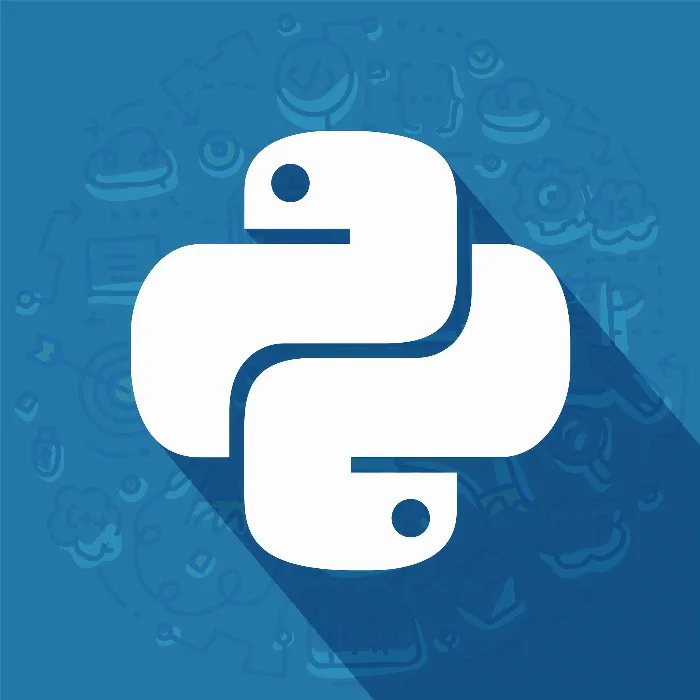Do you want to program a book management software? With this guide, you will learn how to create a simple application for managing books in Python. This software allows you to utilize probably already known functions such as adding, listing, and deleting books. The solution described here is based on an already existing project that we will expand and optimize.
Key insights
- Using static methods to handle inputs
- Structuring the application through modularization
- Important considerations for the user interface and managing outputs
- Basic techniques for dealing with exceptions and error handling
Step-by-step guide
Project structure and setup
First, it's important to familiarize yourself with the structure of the project. You will start with a framework that includes the core components of book management. This includes, among other things, a database resource and input methods.
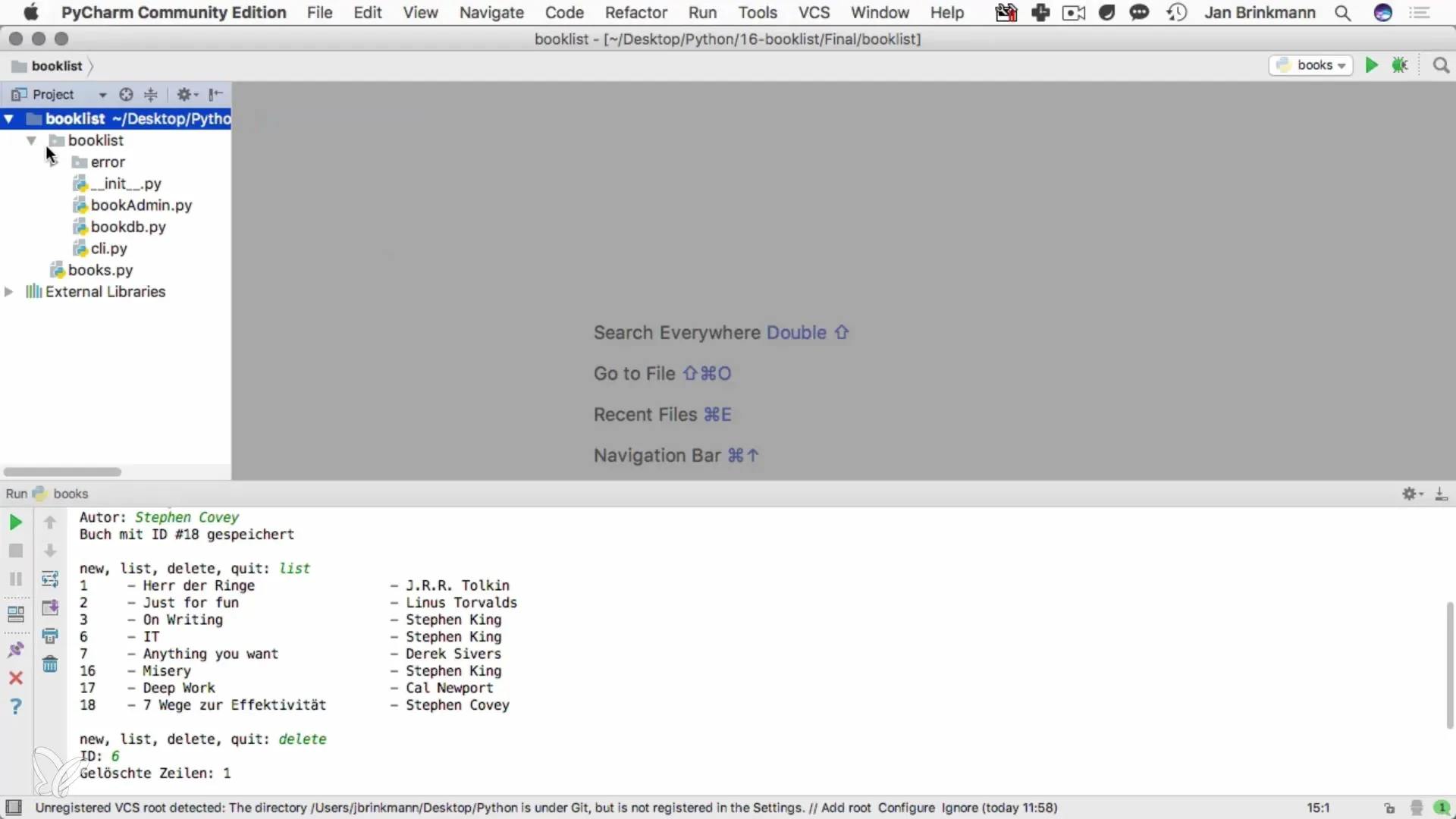
To facilitate management, you will create a CLI input module. This is a class that contains various static methods. These methods allow for a direct input prompt without needing to create an instance of the class beforehand.
Defining input methods
In the CLI input class, you will implement the method read_input, which displays an input prompt and receives the user input. You will also define a custom exception to catch potential errors that may occur when the user fails to make an input.
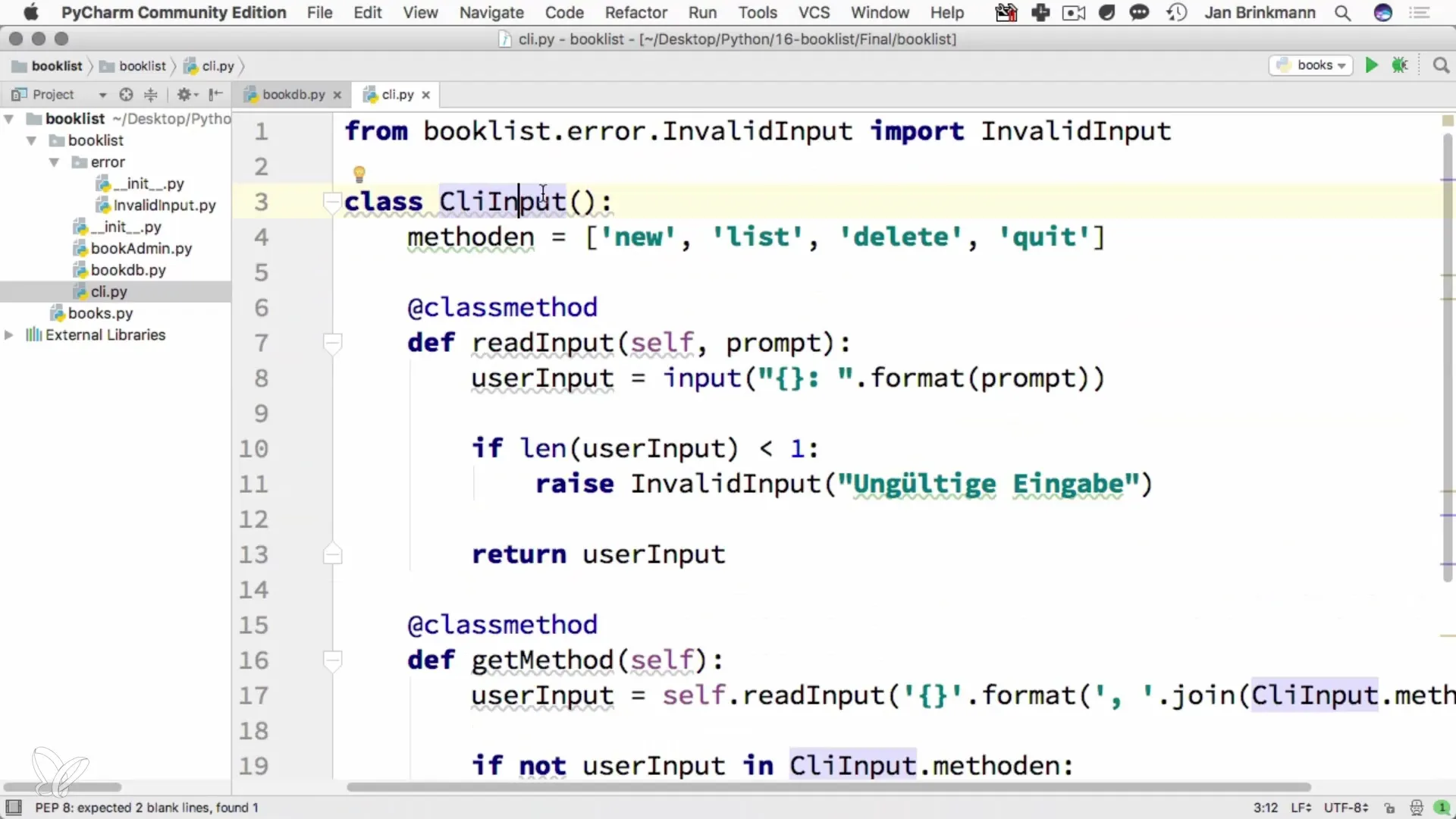
The get_method will be based on read_input and is responsible for validating the input methods and ensuring that only valid options are available.
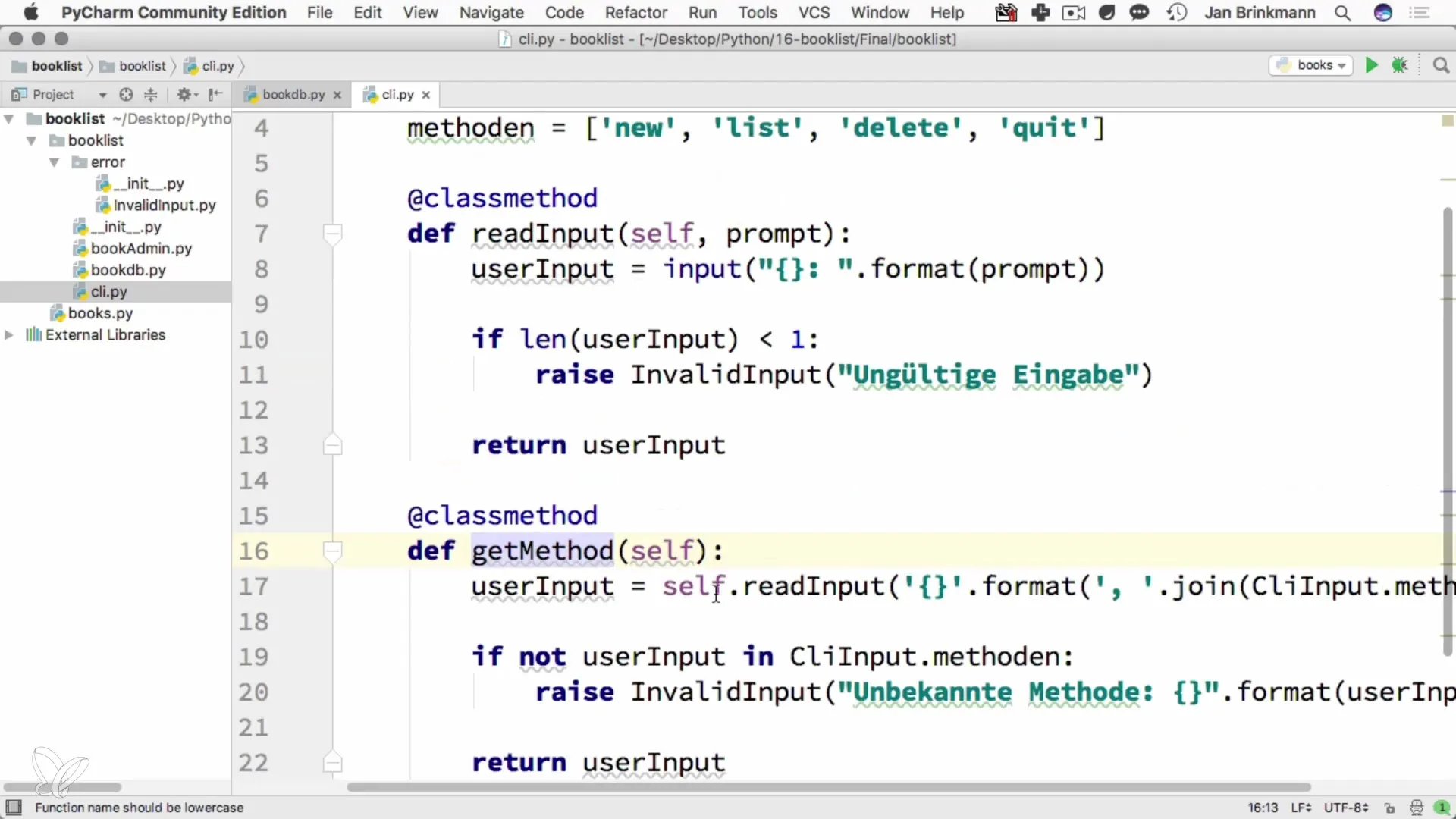
Developing the main script
The main script is where the entire application runs. In this script, you will implement a loop that takes various user decisions. Different options like "Add new book," "List books," or "Delete book" can be selected.
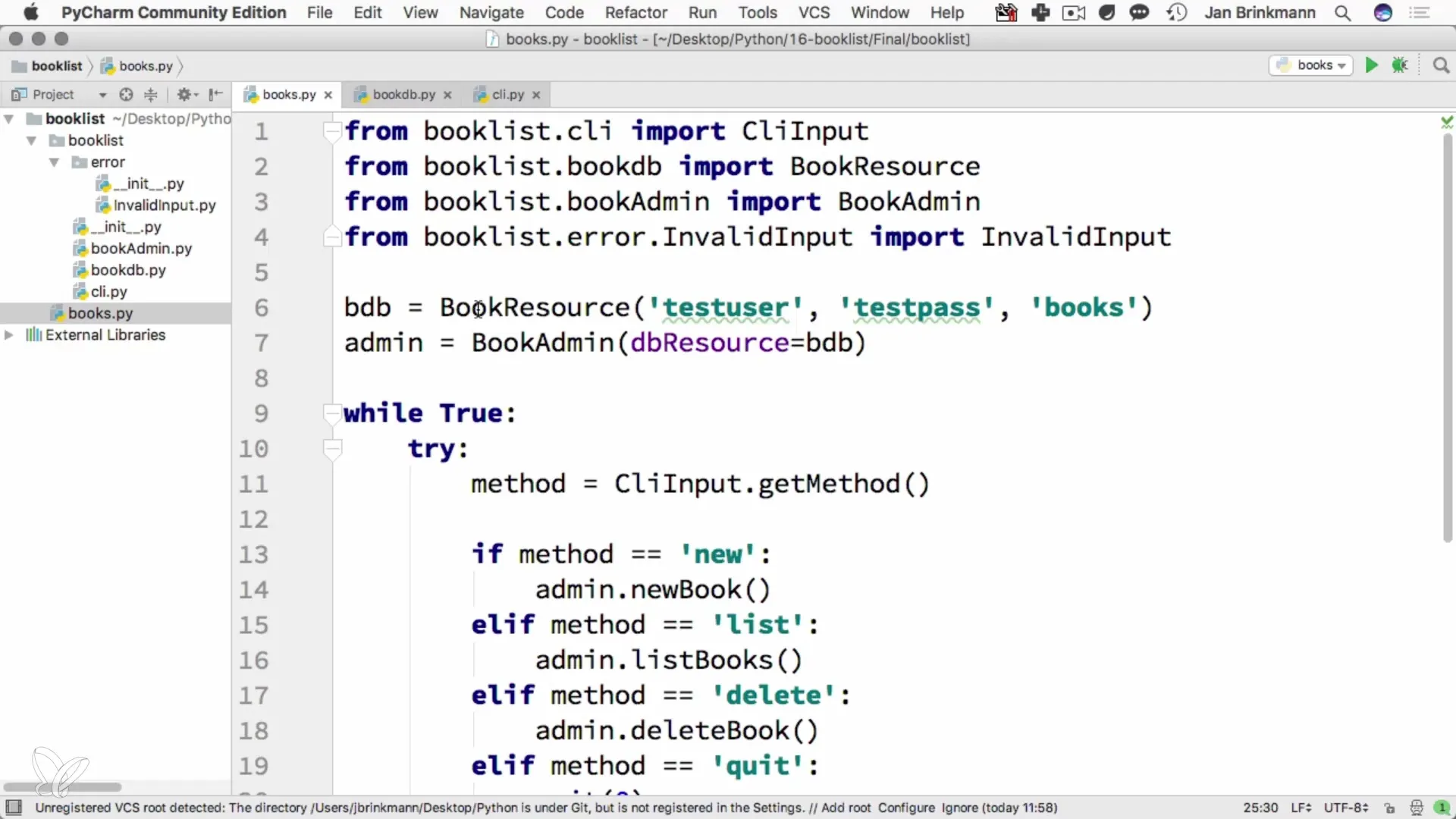
Within this decision loop, you can initialize the necessary resources and call the various functions responsible for the operations. For example, a separate book_admin module that encapsulates the logic for managing the books.
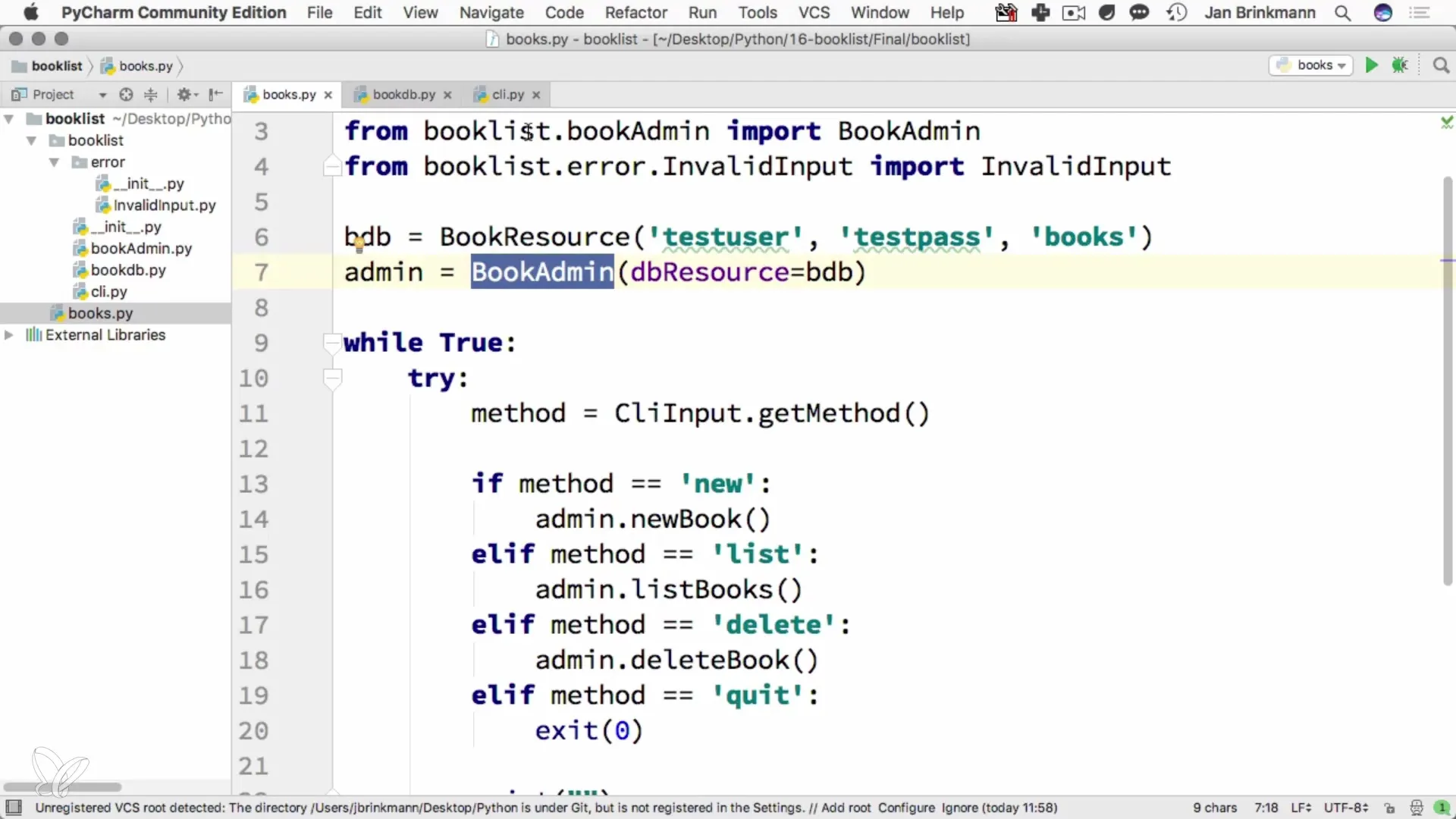
Implementing management functions
In your book_admin module, you will define functions related to book management. This includes a method for adding a new book, where you will input information such as the title and the author.
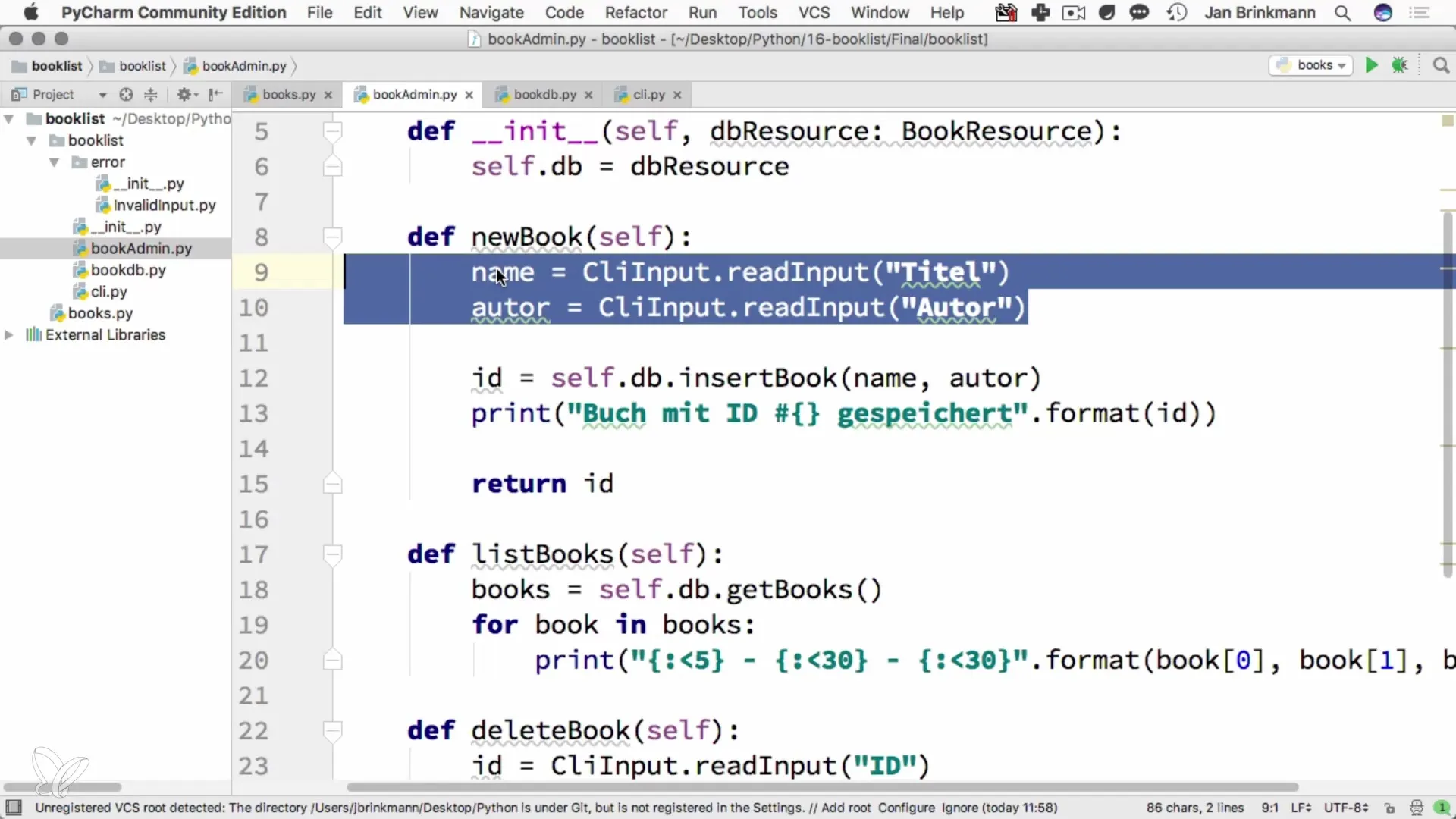
Another central point is the formatting of the output. You should ensure that the book information is presented attractively. This means, among other things, that ID values are left-aligned and the other information is neatly formatted.
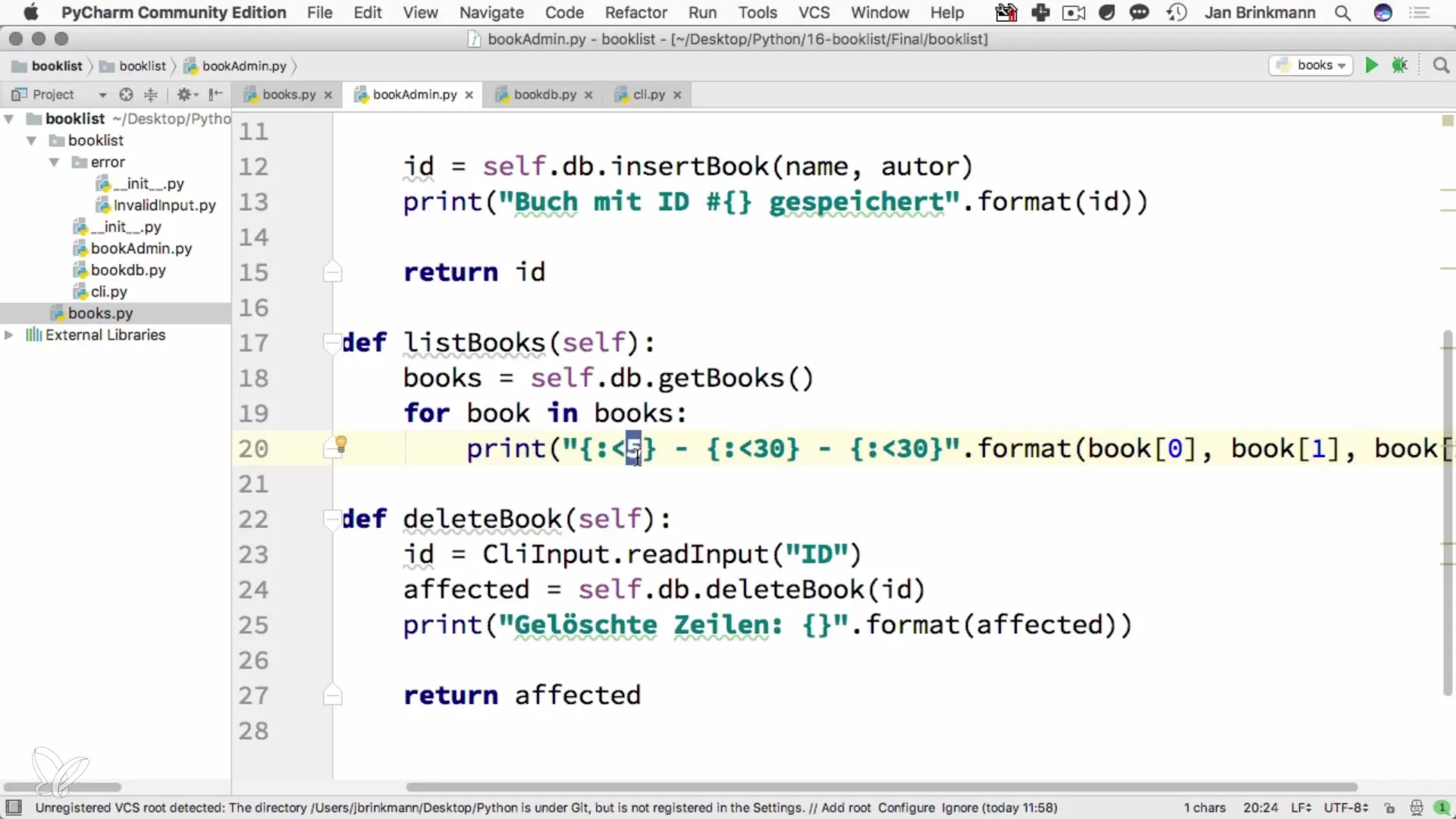
If the user wants to delete a book, they will be given the option to specify the specific ID, and depending on the input, the book will be removed from the database.
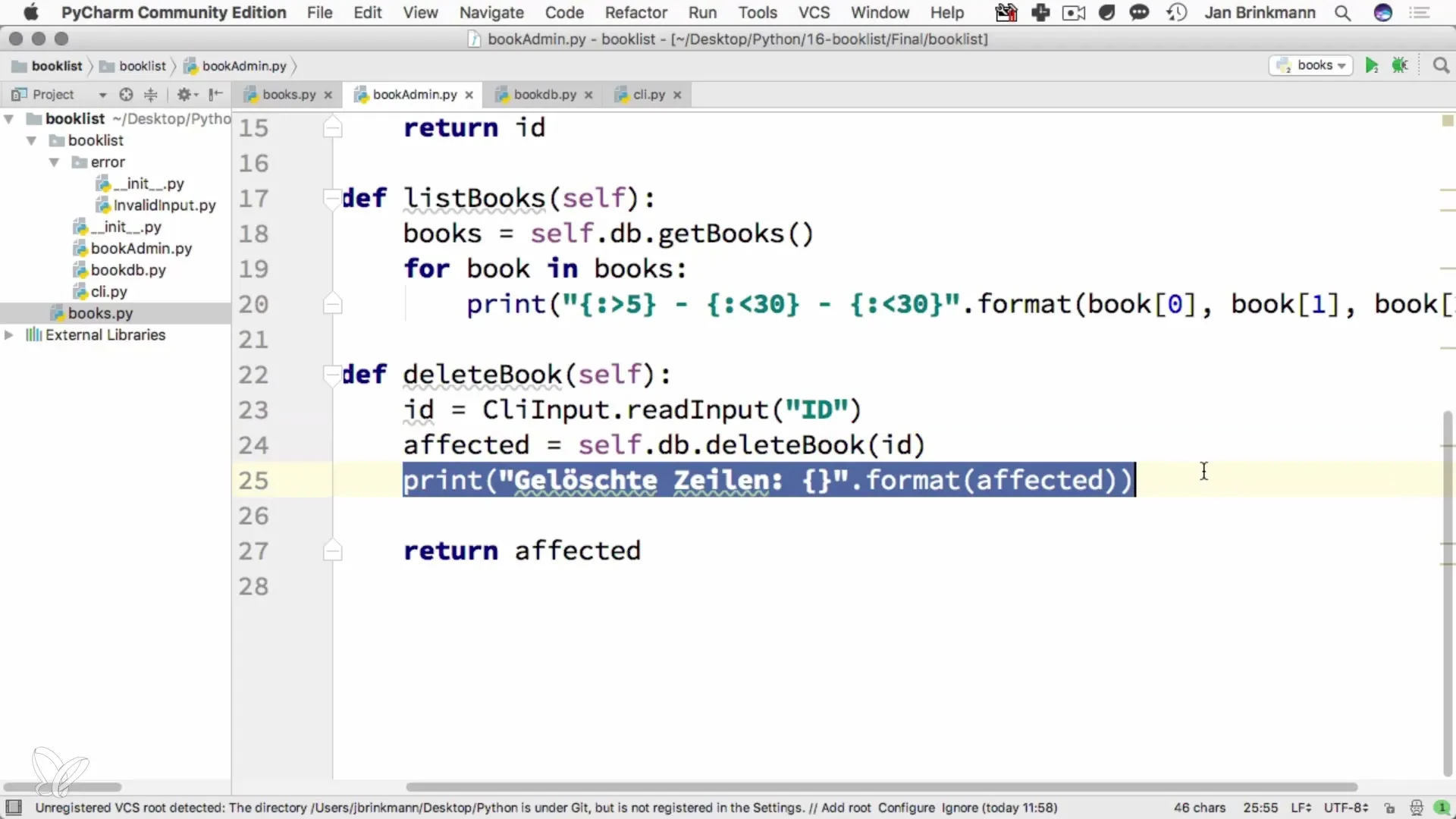
Error handling and imports
When programming, it is important to import the various modules correctly. Make sure everything is well-structured and the import statements are clear and transparent. Avoid using import *, to maintain the clarity of your code.
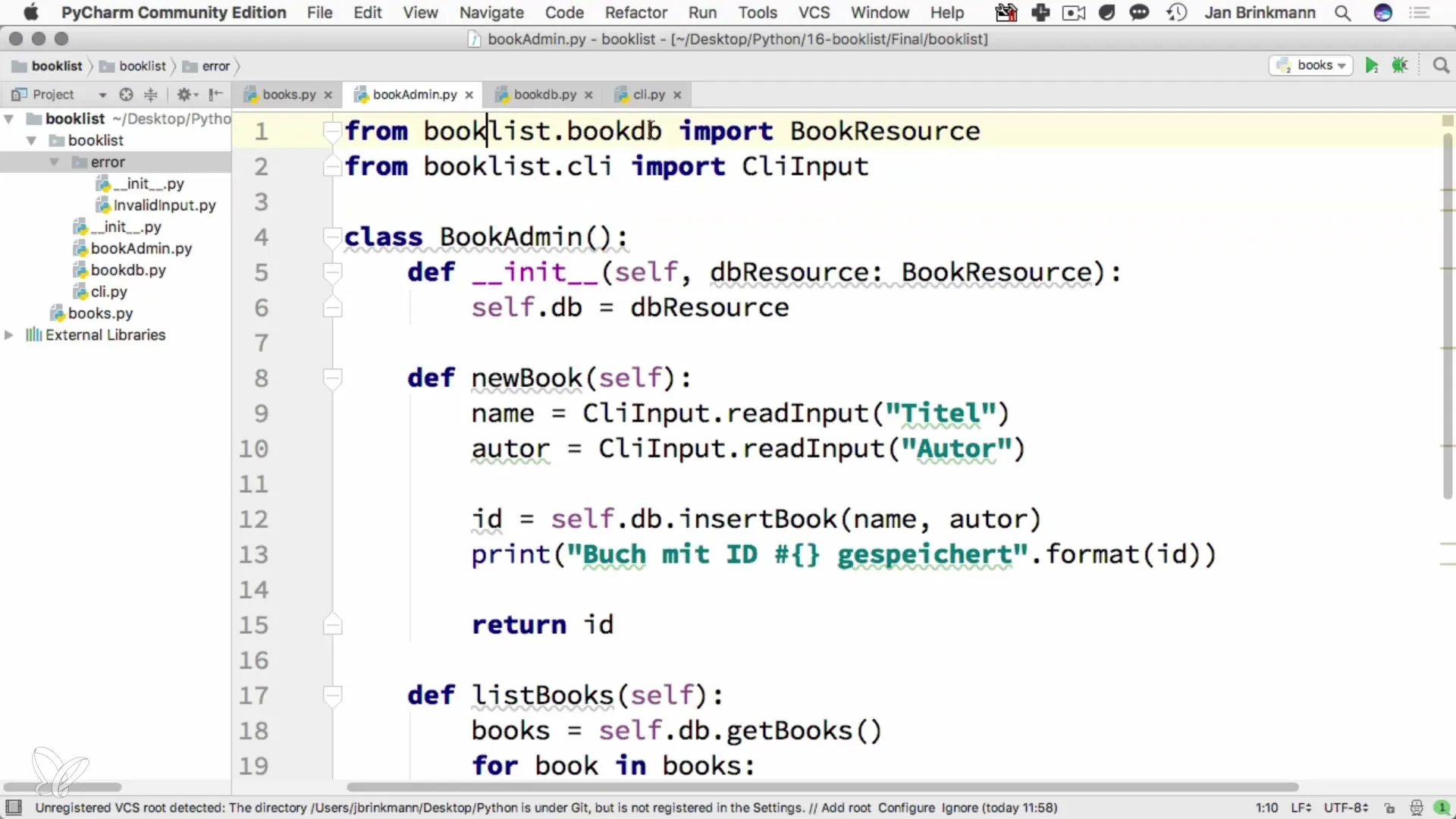
To finalize the application, ensure that all modules are tested and that error handling is robust. Make sure to regularly review your user experience and implement improvements where necessary.
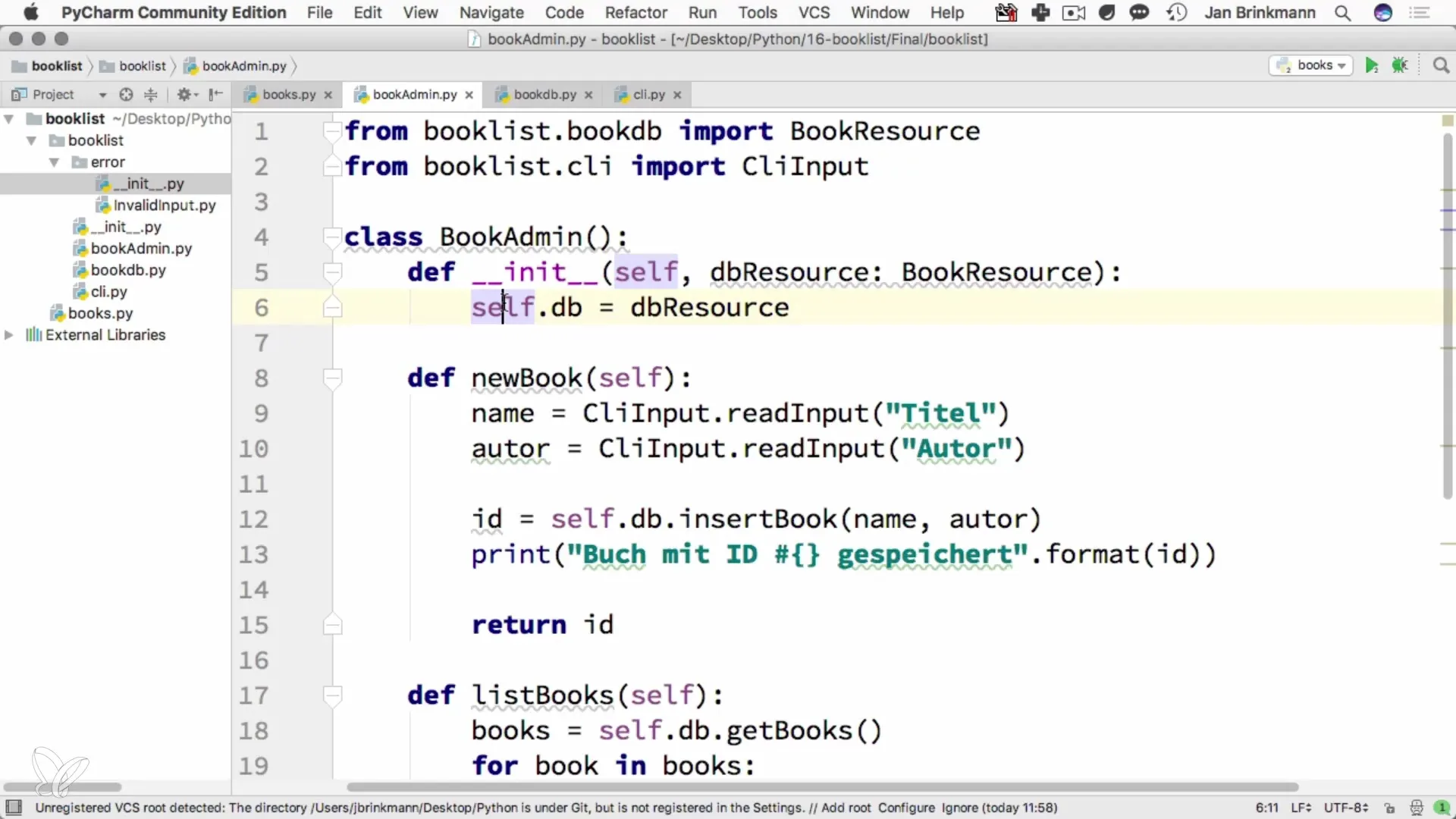
Summary - Creating book management with Python
Through the structured approach to programming the book management, you will learn valuable techniques for developing effective software in Python. You can now independently create various modules and apply the learned methods to develop functional and appealing applications.
Frequently Asked Questions
How do I handle input errors?You should create a custom exception that is triggered for invalid inputs, prompting the user to try again.
Can I expand the project?Yes, you can add more features, such as the ability to filter books by topics or integrate a search function.
What should I consider when sharing the project?Ensure that all imports are correct and that there are no unnecessary dependencies.
How can I test the application?Manual testing is important. Check each function by trying various inputs to ensure everything works.
Where can I find the final project for download?The final project will be provided in the tutorial description.
